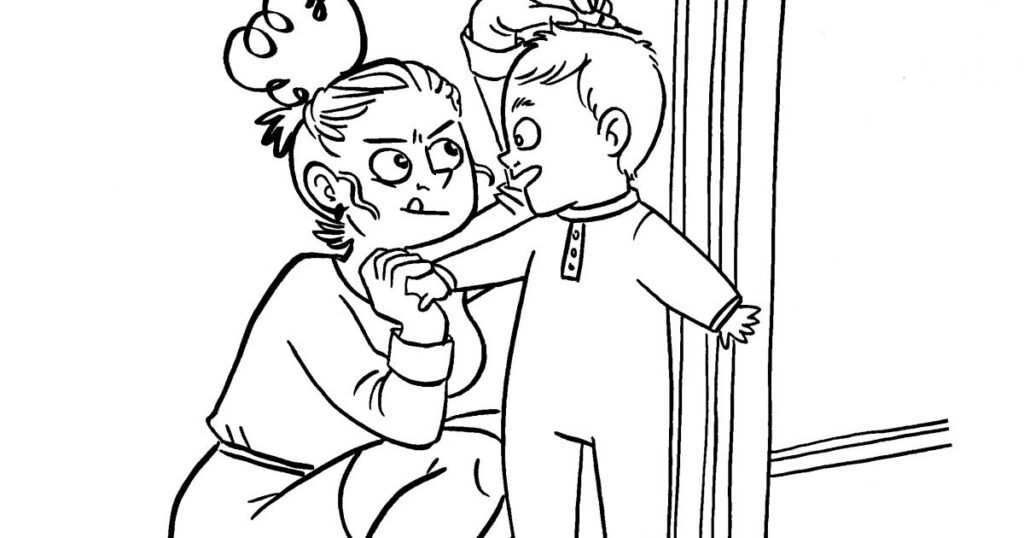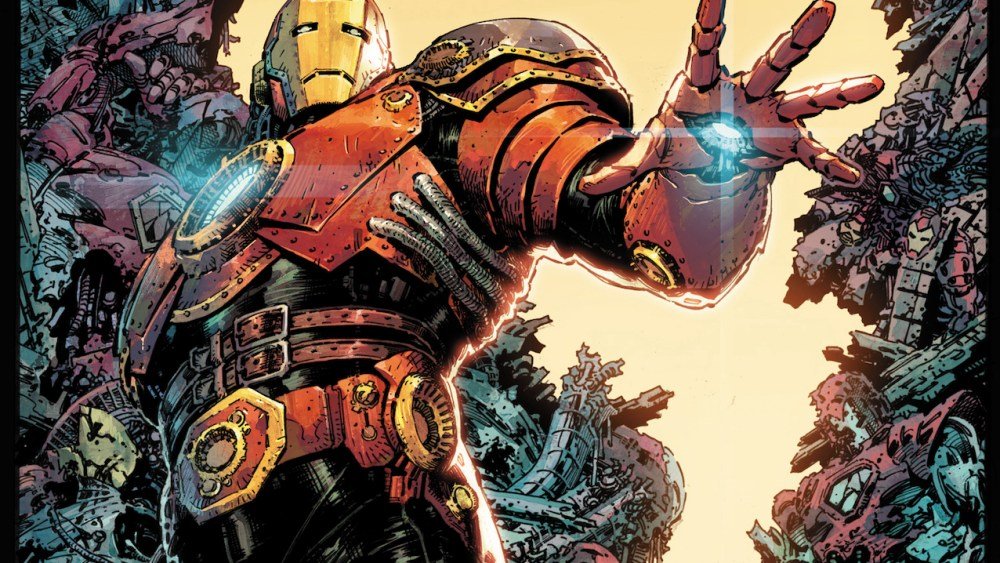Monologues are in Dune’s lifeblood, from the books to the comic book adaptations which brings us to Dune: House Corrino #5. Simultaneously explaining where each character are in their respective arcs while sending them into their next political obstacle by the end of their monologue. Remain focused on the story about spice melange and tech war between Ix and Richese, and what you’ll end up with is an epic that spans generations about fatherhood, sons and hiding abuses of power.
Actions speak louder than words in war, though. Design, character and otherwise, plays a crucial role in connecting words with actions, while also distinguishing who said and did what. Examination of the relationship between words and actions leads readers to, in this reviewer’s opinion, the most fun character in the Dune universe: Rabban.
Comics have an advantage in portraying the brutality of war that the source material of the Dune universe didn’t have. Medium, in its noun form, is perfect to discuss this comic adaptation and Rabban’s use of violence to express himself.
Dreams of the future is what keeps characters like Duke Leto Atreides, the best character in this issue, going in the face of atrocities committed by people like Rabban. The heights of the dreams possessed by Leto and Emperor Shaddam IV are expertly conveyed by Brian Herbert, Kevin J. Anderson and Simone Rigazzoni, in ways good and bad.
Most of the storytelling takes place over multiple planets and houses, all handled well by Herbert and Anderson’s world building. Execution is very important when it comes to this much political maneuvering and, luckily, this creative team has a deft hand that would make the Duke of House Atreides proud even though things may get somewhat ponderous. Place any of the monologues or revelations in this issue at a different rate, though, it wouldn’t build up to a Rabban centric cliffhanger that has me excited about the remaining three issues in this prequel miniseries and not as fun.
All the monologues are distinct enough to make every scene interesting on their own and builds a wonderful enough mosaic when put together that readers start to have fun while reading about issues like imperial political overreach. Dissection of this problem is at the very heart of Dune, which pumps the monologues that fuels it, and gets an added fun dimension when done through the comic book medium. The benefit in adapting these big ideas into a more decompressed medium, with this brilliant creative team, is that readers get more time to ruminate with these difficulties alongside the characters and see where they would align.
Characters like Lady Jessica and Gurney Halleck could easily be generalized when placed in the comic book medium, but Herbert and Anderson never fall for that trap. The flow between each storyline forms the connections that make Dune the epic that has become a timeless classic filled with moral paragons, weary warriors, astute cults and mindless monster Rabban. Each panel feeds into the powder keg that will become the Dune story that has been read and adapted numerous times. Despite being intended as a separate story, readers can’t help but see that these characters and houses are setting the precedent for the challenges that Paul Atreides and Chani will someday face together (and apart).
Comics are nothing without their artist, and, luckily, this issue was in good hands with Simone Ragazzoni. Each great house is given a distinct design, from the line work to the panel composition, while remaining a part of the grand universe that Frank Herbert created almost 60 years ago. “Perfect” is a word I don’t use lightly, but in this instance, no other word describes the art.

BOOM! Studios
The reds and blues used by colorist Dan Jackson feel both classic while having a feeling of looking at something from some distant future. The sentiments of the original book is expressed even in the coloring, expressing colliding ideologies and bold monoliths that warp the worlds that surround them, making Jackson the secret glue that helped connect this miniseries together. Intended as a piece of a greater tapestry, the colors help welcome readers that has any level of knowledge about Dune into the story by both recalling familiar archetypes and playing on the themes that Dune fans love to discuss. World building comes in many shapes and sizes, with Dune: House Corrino’s strong sense of coordination providing a strong argument that coloring is one of the strongest methods of world building in comics.
The engagement with coloring is only deepened when the reader takes into account all the detail that Simone Ragazzoni put into this issue, from the architecture to the characters’ clothes. Marinate your brain in all these details, and you’ll soon find that this 35 page comic contains the same amount of imagination that Frank Herbert imbued with his original sci-fi novels. Others have said that adaptations are always lesser works, but Ragazzoni proves how much skillful thought and decision-making has to go into filling in the blanks of turning prose into the visual medium that is comic books. I can only think of a handful of sci-fi comics that have filled my imagination with so many thoughts, even regardless of the (many) words that obscured the thoughtful art on display.
Read through the comic, and you even start to see how the art and words connect on a metaphorical way, which just enhances every reading with more awareness of the story. The city (or what passes for a city in Dune) of Carthag is masterfully realized as a technological hub in the middle of the desert planet of Arrakis where Baron Harkonnen orders his nephew to destroy whatever their spice operation hasn’t already taken from the native Fremen people. This story, much like the original Dune, turns around the damage the Harkonnen house does, and you can feel the danger in the Baron’s words to Rabban. The biting Baron makes this order so nonchalantly, you can’t help but feel put off by his words.
Brian Herbert and Kevin J. Anderson have these characters figured out enough, Frank Herbert would be proud. The writer duo is so magical together, that I’m hoping they collaborate on another Dune-related project after this prequel miniseries soon concludes. The agency they give each character is both a burden and a curse, the weight of which can be felt by the reader in their actions. Readers are welcomed to an expansive view of an epic mosaic that includes a man struggling between justice and revenge, the member of a generational cult reckoning with her decisions and her position in the future they made and a noble warhorse who is trying to save as many people as he can.

BOOM! Studios
Entirely unexpected, these disparate threads start to form a future that will be filled with turmoil and bloodshed which will lead to the kind of messiah Paul Atreides will become. The directions these final three issues can go are unpredictable but, given its proximity to the events of the original Dune, readers can start connecting the dots that will enrich the ultimate crescendo.
Dune: House Corrino #5 is the kind of fun the Dune universe offers. All of these characters are struggling with such big ideas that on the micro level may seem isolated but, when viewed on the macro level, invariably lead to the Baron’s planet, his Dune (as he calls it). The audacity to present all of this without any handholding, and to rely solely on the visual prowess of this issue’s artist and the fun the writers have with the political intrigue, is admirable. The joy I felt watching these plot lines start to convene could only come from expert craftsmen confident in their endgame. An extraordinary feat in the expansive storytelling and deep characters only Dune could provide.



